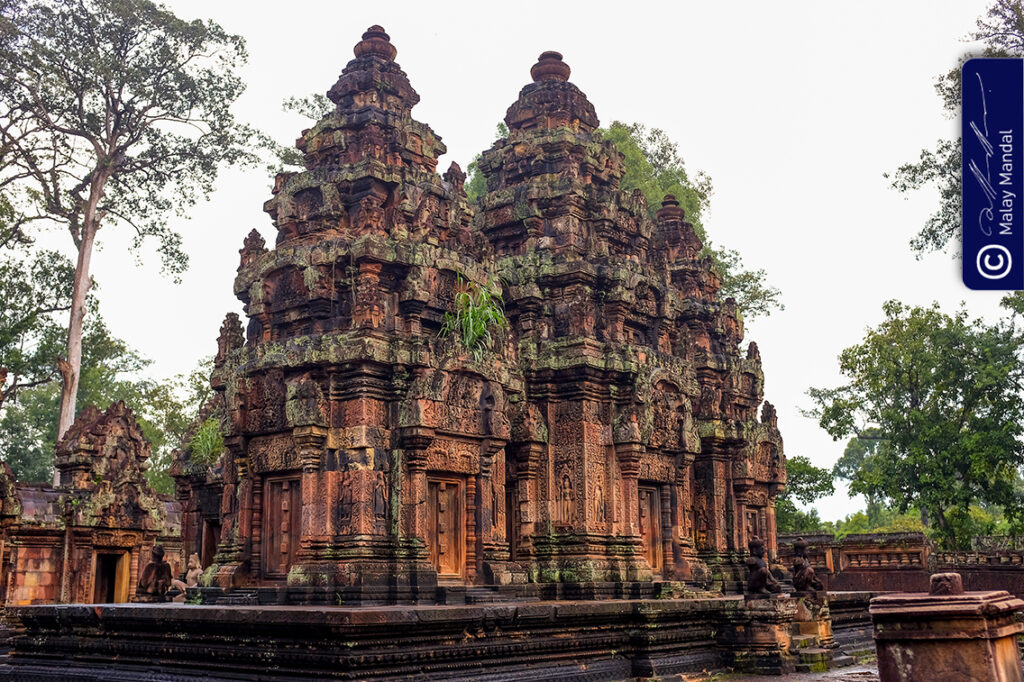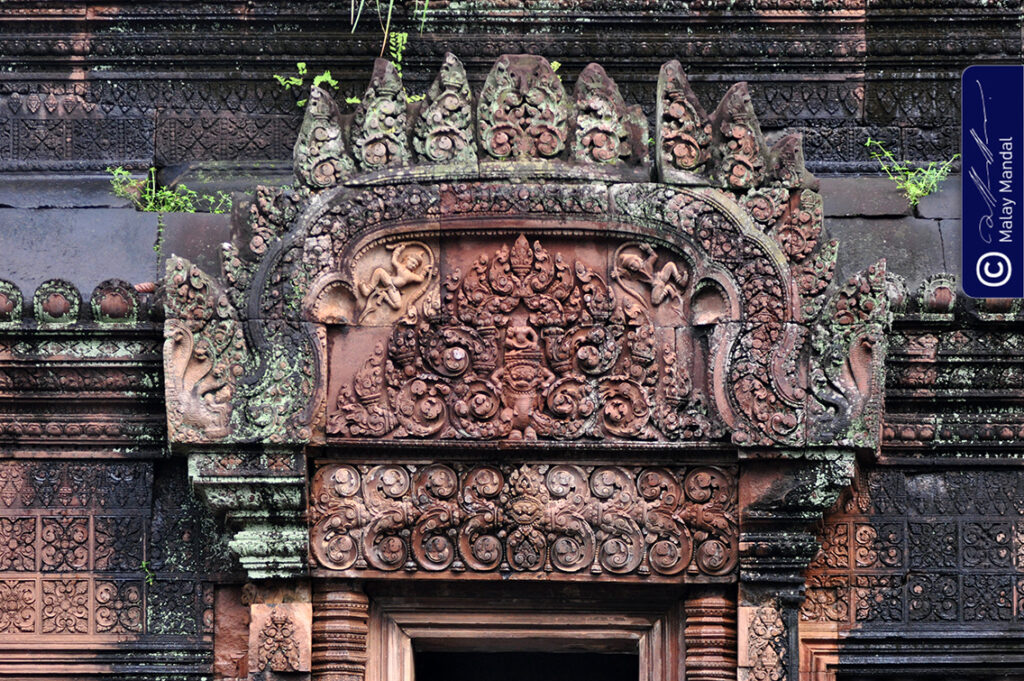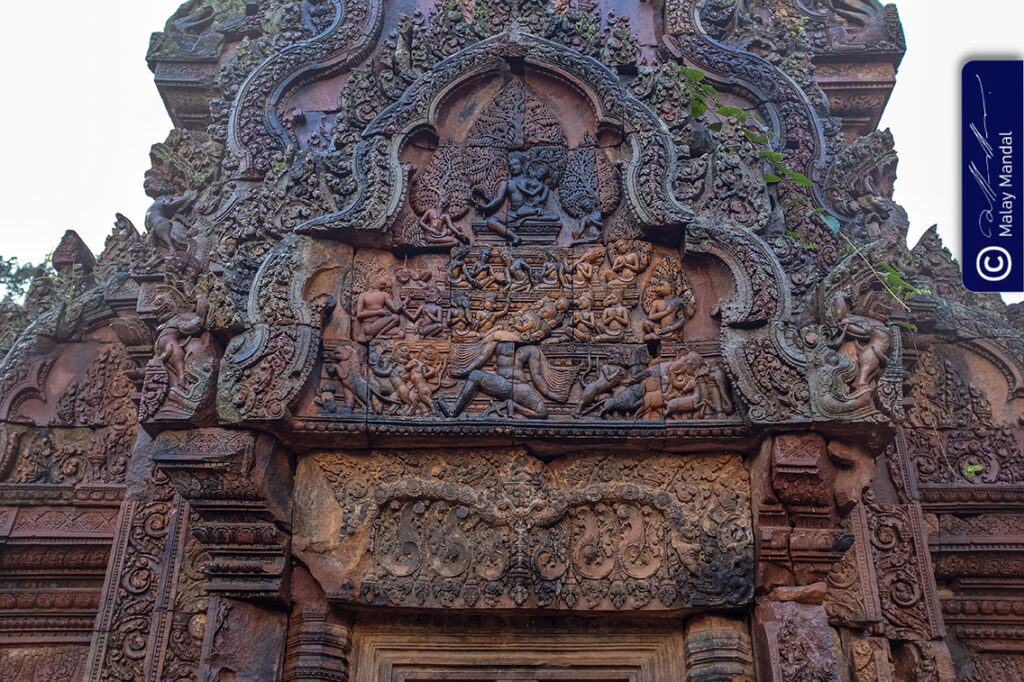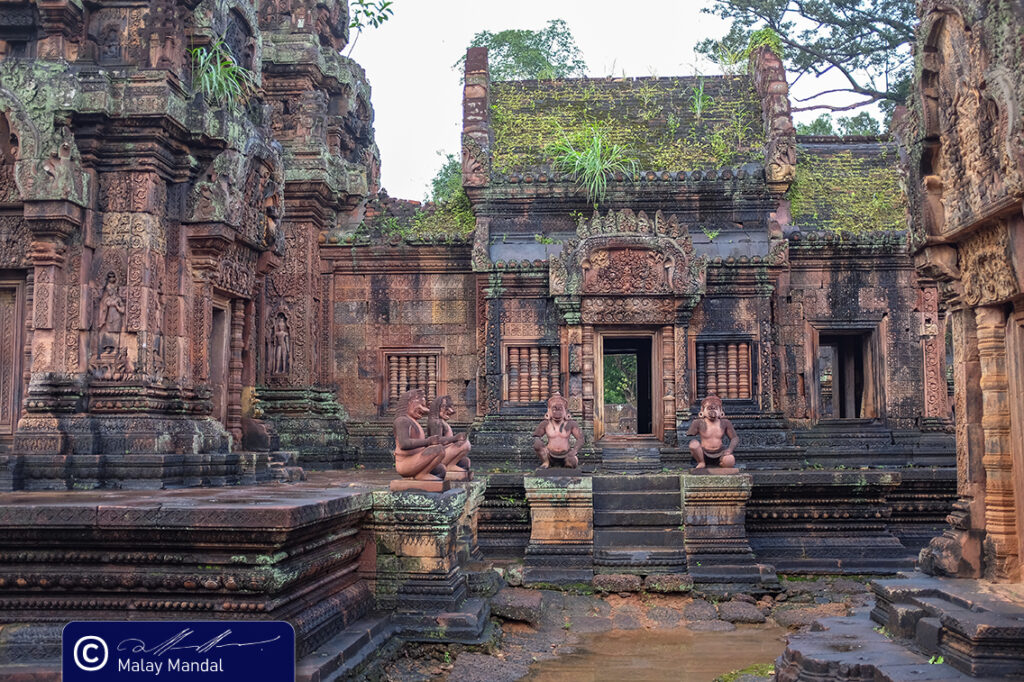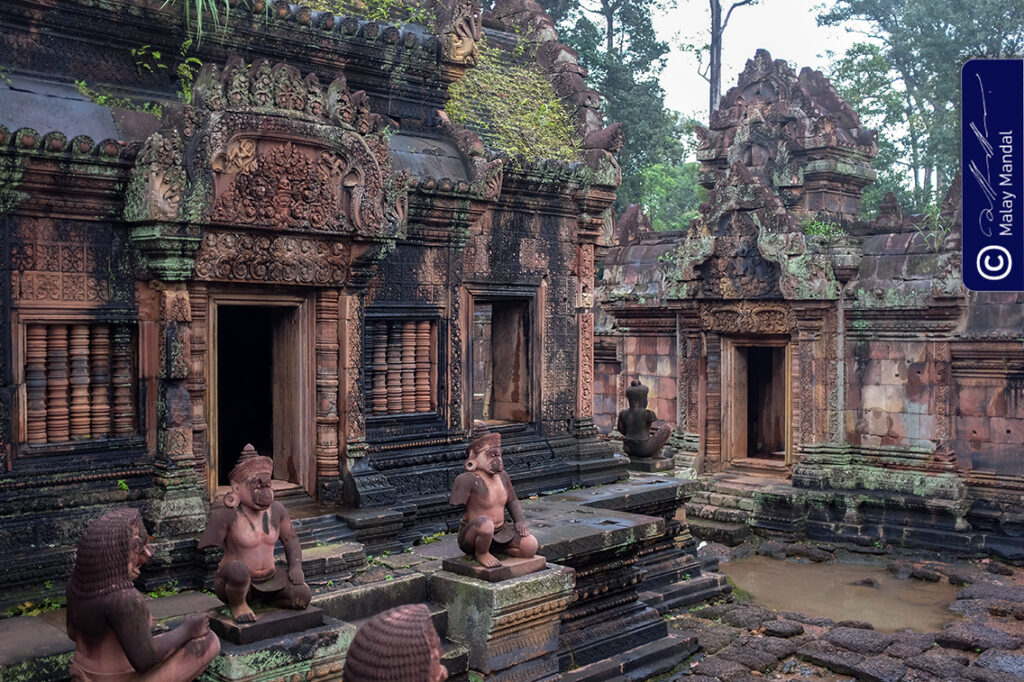
Elegance over grandeur; intricacy over size; craftsmanship over material; subtlety over megalomania; and austerity over extravagance – these considerations must have been the underlying tenets when this “jewel in the crown of Angkorian art” was conceived. In words of Maurice Glaize, “Given the very particular charm of Banteay Srei – its remarkable state of preservation and the excellence of a near perfect ornamental technique – one should not hesitate, of all the monuments of the Angkor group, to give it the highest priority. Although, in our opinion, there is no gain in trying to classify the quite different monuments of Angkor Wat, Banteay Srei or the Bayon in order of merit – nevertheless, Banteay Srei is by popular consensus a “precious gem”, the “jewel of Khmer art”.”

Commissioned by a Brahmin and not a monarch, this temple complex ushered in new idioms of Khmer temple architecture. Yajnavaraha, a teacher of Khmer King Jayavarman V (r. 968-1001 CE) was the chief patron and driving force behind conceptualizing this. By judiciously adopting a compact ground plan and blending sandstone and laterite in apt quantities – with the fine grained pink hued sandstone slabs restricted to the central parts, and coarse grained laterite blocks employed mostly for the retaining walls – a delicate balance of proportions has achieved. The craving is masterly; probably the best in the whole of Cambodia. Representation of visual narratives follow Hindu folklore, but the characters show a strong Khmer feel. The beautiful state of these carved panels that make them all the more impressive is because of Anastylosis diligently carried out by Marchal from 1931 to 1936 CE.



Why this remote temple was chosen for such an elaborate treatment presents an interesting chapter of colonial exploitation and genuine conservation. Banteay Srei was introduced to the western world by Parmentier who first wrote about it. Andre Malraux, an author of some repute in France happens to read the article by Parmentier. In 1923, Malraux after studying the existing legal framework plans an excursion to Banteay Srei and walks away with four devata statues. He was about to leave Cambodia when in Phnom Penh, he was arrested and the haulage seized. This brought Banteay Srei into public limelight locally and in France. A systematic conservation was planned for this any many other remotely distributed Khmer temples. Practicalities | The temple complex is well-managed and generally remains light with few tourists. Just as with any Hindu temple, the best time to explore this east-facing shrine is early morning when the light is still soft, however the intricate carvings can be appreciated all throughout the day. Take a ticket and approach the temple from east. Before entering wait to check the general arrangement of the many elements. It is advisable to take a cursory round around the inner reaches before going for a thorough examination, probably with a binocular. The beauty of Banteay Srei lies in its intricate carving; indulge yourself. A guide can be handy if you want to understand the stories-in-stones.

